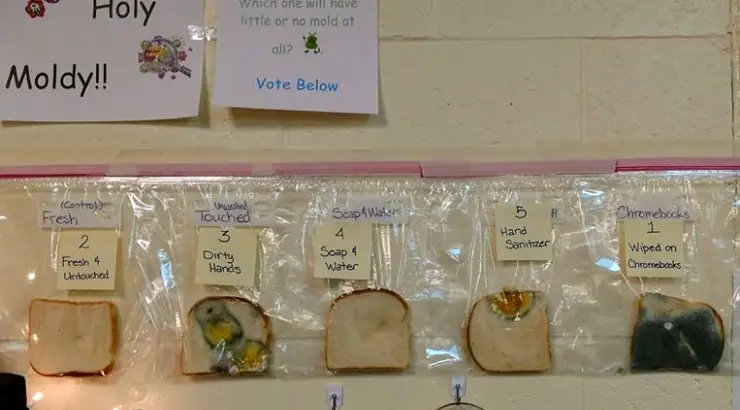Health
Classroom Experiment Shows Just How Important Washing Your Hands Really Is
The results of the experiment were, as the science teacher put it, “DISGUSTING!!!”

(TMU) — This flu season one science teacher devised a hands-on way to show her students—and the internet—just how important hand washing is.
Jaralee Annice Metcalf posted photos and a brief description of the experiment on Facebook. The post has since been shared over 65,000 times and is a science lesson we could all use right now.
The CDC is currently reporting that the flu is widespread in 30 U.S. states. In addition to the flu, plenty of unpleasant sicknesses spread this time of the year despite our best efforts. But it’s probably likely that some of us don’t quite understand which of our efforts truly is the best and, thanks to the CDC’s data—it shows.
According to her post, Metcalf understandably is, like many teachers, “sick and tired of being sick and tired of being sick and tired.”
With a loaf of bread, some plastic baggies, hand sanitizer, and good ol’ soap and water Metcalf and her class got to work.
One slice of bread was put into a plastic baggie and sealed, without being touched. Another was touched with unwashed hands. Another was touched with freshly washed hands. Yet another was touched with hands that had just been doused in hand sanitizer. And just for kicks, another was rubbed all over the classroom’s Chromebooks.
The results were, as Metcalf put it, “DISGUSTING!!!”
We did a science project in class this last month as flu season was starting. We took fresh bread and touched it. We did…
Posted by Jaralee Annice Metcalf on Thursday, December 5, 2019
The experiment took about 3-4 weeks due to the preservatives in the bread. Metcalf told Parents.com:
“If the bread had been exposed to air and moisture, the experiment may have gone faster. The breads that were very clearly exposed to different germs grew mold quicker. And ones touches by clean hands plus the soap and water ones were not exposed to the germs that cause the mold growth to quicken.”
And for anyone with negative quips or questions about the experiment, Metcalf added some important points to her post:
- **All the students touched each piece (of the touched pieces)**
- **It was plain white bread**
- ** Editing again to clarify: The control piece wasn’t fresh when we took this picture. It just wasn’t ever touched with naked hands and it was moved immediately from the bread bag to the zip lock baggie (every piece of bread here is from the same loaf and same day)**
- **They’re freezer ziplock bags meant for raw meat and they’re sealed tight**
- **We do sanitize our Chromebooks, obviously we did not do that for this experiment ?**
- **We are an elementary school. Not a fancy CDC lab, so relax a little and WASH YOUR HANDS**
- ?? Again! This is an elementary school classroom experiment, try not to get upset! ??
- **I am in no way trying to make Google Chromebooks look bad, all laptops have germs, the amount is based on the person/people using them and not the brand (can’t believe I need to specify this)**
- **It is just plain soap. Not antibacterial or anything fancy**
For those who may have forgotten, Metcalf has an important reminder for parents and teachers:
“Germs spread rapidly. And it doesn’t matter how often they’re told or how well they’re taught to wash their hands, children won’t always do it properly or enough.”
If you’re interested in trying the experiment for yourself, Metcalf suggestions following these instructions. And if you’re interested in staying healthy this season, Metcalf highly suggests you “WASH YOUR HANDS” and remember that “hand sanitizer is not an alternative to washing hands!!”
Hand washing is the single best way to avoid the spread of germs but eating healthy, staying hydrated, and staying home from school or work when you’re sick is always a good idea, too.
By Emma Fiala | Creative Commons | TheMindUnleashed.com
Typos, corrections and/or news tips? Email us at Contact@TheMindUnleashed.com
